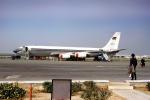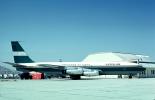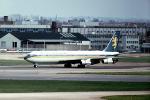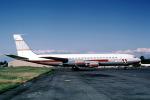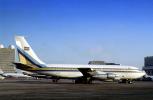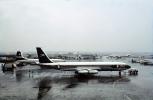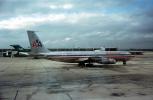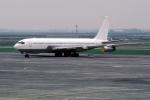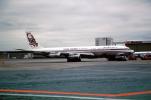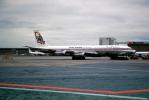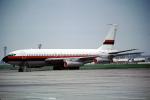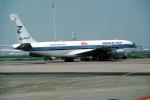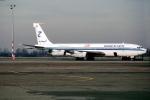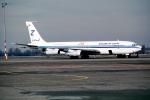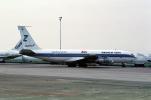Animals
Cities
Disasters
Entertainment
Food
Government
Health
Industry
Insects
Military
Nature
People
Sports
Technology
Universe
Vehicles
Explore over 500,000 Images in my personal collection
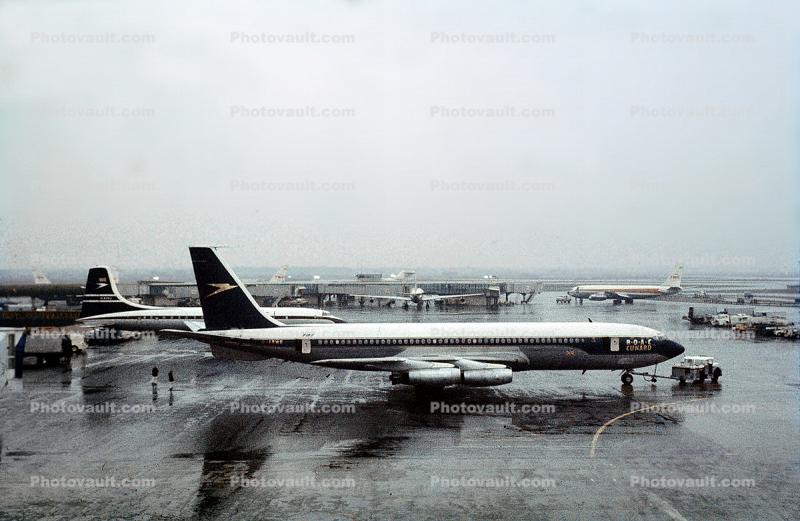
|
|

- Code Number:
- TAFV28P03_13
- Title:
- G-ARWE, Boeing 707-465, B-O-A-C, Cunard
- CN: 18373
LN: 302
First flight: 1962
Total airframe hrs: 20870
Engines: 4 Rolls Royce 508 Conway
Accident Report:
Status: Final
Date: 08/04/1968
Time: ca 15:35
Crew: Fatalities: 1 / Occupants: 11
Passengers: Fatalities: 4 / Occupants: 116
Total: Fatalities: 5 / Occupants: 127
Airplane damage: Written off
Airplane fate: Written off (damaged beyond repair)
Location: London Heathrow Airport (LHR) (United Kingdom)
Phase: Initial climb (ICL)
Nature: International Scheduled Passenger
Departure airport: London Heathrow Airport (LHR) (LHR/EGLL), United Kingdom
Destination airport: Zurich-Kloten Airport (ZRH) (ZRH/LSZH), Switzerland
Flight number: 712
Narrative:
The aircraft was operating Flight BA 712 from London-Heathrow Airport to Z?rich and Sydney. A check pilot was on the 707 for the purpose of carrying out a route check on the pilot-in-command. The aircraft became airborne from runway 28L at 15:27 and 20 seconds later, just before the time for the noise abatement power reduction, the flight crew felt and heard a combined shock and bang. The thrust lever for the No. 2s:" jet engine" "kicked" towards the closed position and at the same time the instruments showed that the engine was running down. The captain ordered the engine failure drill. Because the undercarriage was retracted, the warning horn sounded when the flight engineer fully retarded the thrust lever; the check pilot and flight-engineer simultaneously went for and pulled the horn cancel switch on the pedestal while the co-pilot instinctively but in error pressed the fire bell cancel button. In front of him the flight-engineer went for the engine fire shut-off handle but he did not pull it. The check pilot then reported seeing a serious fire in the No. 2 engine. Having initially started an engine failure drill, the flight engineer changed directly to the engine fire drill. ATC originally offered the pilot-in-command a landing back on runway 28L and alerted the fire services but after a "Mayday" call Flight 712 was offered runway 05R which was accepted as it would result in a shorter flight path. About 1.5 minutes after the start of the fire, No. 2 jet engine, together with part of its pylon, became detached and fell into a water filled gravel pit. At about the time the jet engine fell away the undercarriage was lowered and full flap selected. The undercarriage locked down normally but the hydraulic pressure and contents were seen to fall and the flaps stopped extending at 47 deg, that is 3deg short of their full range. The approach to runway 05R was made from a difficult position, the aircraft being close to the runway and having reached a height of about 3000 feet and a speed of 225 kt. There is no glide slope guidance to this runway but the approach was well judged and touchdown was achieved approximately 400 yards beyond the threshold. The aircraft came to a stop just to the left of the runway center line, about 1800 yards from the threshold.
After the aircraft came to rest the flight engineer commenced the engine shut-down drill and closed the start levers. Almost simultaneously the pilot-in-command ordered fire drill on the remaining engines. Before this could be carried out there was an explosion from the port wing which increased the intensity of the fire and blew fragments of the wing over to the starboard side of the aircraft. The pilot-in-command then ordered immediate evacuation of the flight deck. The engine fire shut-off handles were not pulled and the fuel booster pumps and main electrical supply were not switched off. There were more explosions and fuel, which was released from the port tanks, spread underneath the aircraft and greatly enlarged the area of the fire. The cabin crew had made preparations for an emergency landing and as the aircraft came to a stop opened the emergency exits and started rigging the escape chutes. The aircraft passengers commenced evacuation from the two starboard overwing exits and shortly afterwards, when the escape chutes had been inflated, from the rear starboard galley door and then the forward starboard galley door. However, because of the spread of the fire under the rear of the fuselage the escape chute at the rear galley door soon burst and, following the first explosion, the overwing escape route also became unusable. The great majority of the survivors left the aircraft via the forward galley door escape chute.
PROBABLE CAUSE: "The accident resulted from an omission to close the fuel shut off valve when No. 2s:" jet engine" caught fire following the failure of its No. 5 low pressure compressor wheel. The failure of the wheel was due to fatigue." - Keywords:
- Caption Disclaimer

